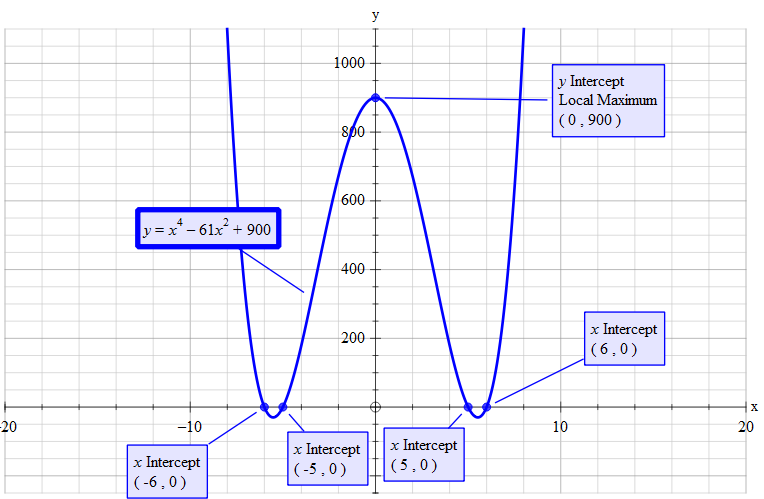How do you factor #x^4-61x^2+900#?
4 Answers
Explanation:
Explanation:
Finding the correct factors for a quadratic trinomial which has a big value for (c) is not as daunting as it might appear at first:
There are a number of clues to look out for.
In
If
Also remember that an odd number can only come from
ODD + EVEN, so this immediately eliminates the situation of two even factors.
Therefore the required factors are not very far from
Consider factors less than
Ah,
so these are the factors we want.
A difference approach
Explanation:
Given:
Set
Set
compare to
where

Note about the minimums.
You must not assume that they are centrally located between the points where the plot crosses the x-axis. In fact if you differentiate and set it to 0 you will find that they are slightly off centre.
Explanation:
Call
Find 2 numbers knowing the sum
and the product (
To do so, compose factor pairs of
This last sum is
Therefore. the 2 numbers are:
Replace





